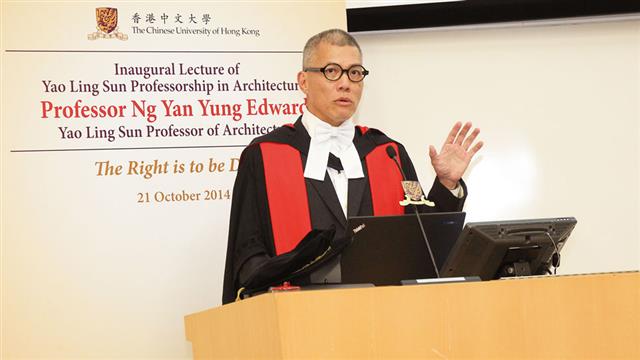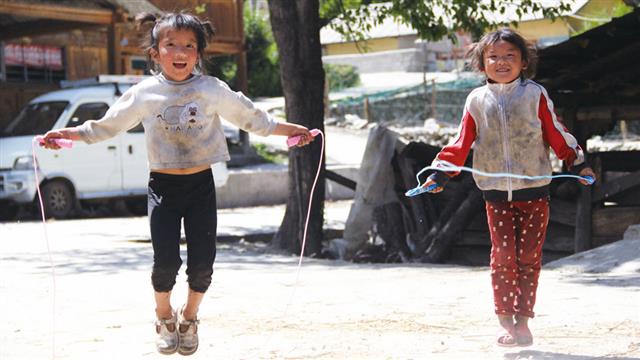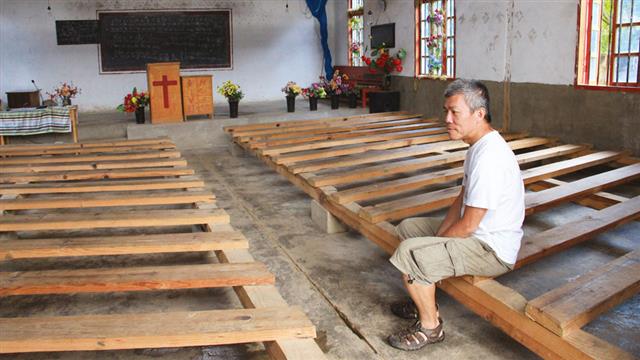New Yao Ling Sun Professor of Architecture Shares his Quest for the 'Right' Answers
'The Right is to be Done', the title of Prof. Ng Yan-yung Edward's Inaugural Lecture of Yao Ling Sun Professorship in Architecture on 21 October, is also his motto, which, as he disclosed at the beginning of the lecture, was borrowed from Sir David Akers-Jones. In the lecture he took the audience on his journey in the past 15 years, trying to find the answer to the question 'What should be done to improve lives?'
Professor Ng remembered very well how Prof. Peter Tregenza, who taught him lighting design at the University of Nottingham, put forth the question 'What should be done?' when showing the poor living conditions of the British people after the Second World War.
When Professor Ng returned to Hong Kong in 1999, he was surprised to find that many people in this city still lived in poor and over-crowded conditions, without suitable amount of daylight and proper air ventilation. And he remembered his teacher's question: 'What should be done?'
Following in his teacher's footsteps, he established an International Daylight Monitoring Station on the top of the water tower of New Asia College and formulated some guidelines for daylighting design in buildings in Hong Kong.
After the outbreak of SARS in 2003, it was known that the over-crowded urban conditions and the lack of daylight and air ventilation had something to do with the epidemic. As an architect, Professor Ng asked himself again, 'What can be done?' He was invited by the Planning Department of the HKSAR Government to look into the issue and the result was the Air Ventilation Assessment (AVA) methodology that he finished in 2006. His recommendations were adopted by the Government and all governmental projects have to be assessed by the AVA system, including the planning of what used to be Kai Tak Airport and the design of the then new Government Headquarters.
After the AVA project, Professor Ng was commissioned by the Government to study our city a little more in order to achieve better urban planning. He completed the study in 2012 and produced the urban climatic map. He said, 'I'm confident that we now have a better analytic tool to design our city better and to improve life.' After this research, Professor Ng and his team were invited by various cities in the world, including Singapore, Ho Chi Minh City and Kaohsiung, to conduct studies to improve their cities' urban environments. He said, 'So we're busy. That's why Edward's lab is known infamously as a 7-11 lab.'
Lately Professor Ng travelled again and was saddened by the lives of many wretched kids living in poor and remote villages without electricity, running water, and access to modern amenities. These kids do not have knowledge of the world outside and have no future. 'What should be done?'
The answer is the 'One University, One Village' initiative, which is Professor Ng's latest brainchild. He said, 'I firmly believe that if we from the universities cannot change lives for the better, we're not doing what's right. I don't believe that with the knowledge, resources, people and talent of a university, we cannot make a difference to the lives of a village.' Together with teachers and students from Peking University, Stanford, Cambridge, and Kunming University of Science and Technology, Professor Ng set out to improve the livelihood of rural villages and bring their villagers a better future.
For some, the holy grail of academia is tenure, a research grant, or a prize. For Professor Ng, it's improving lives.




